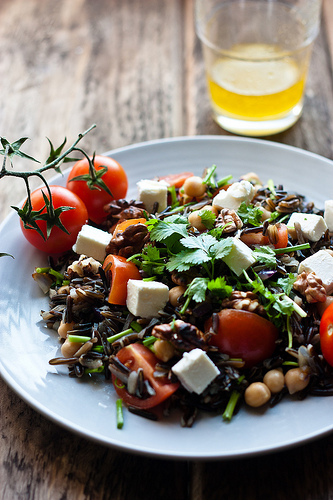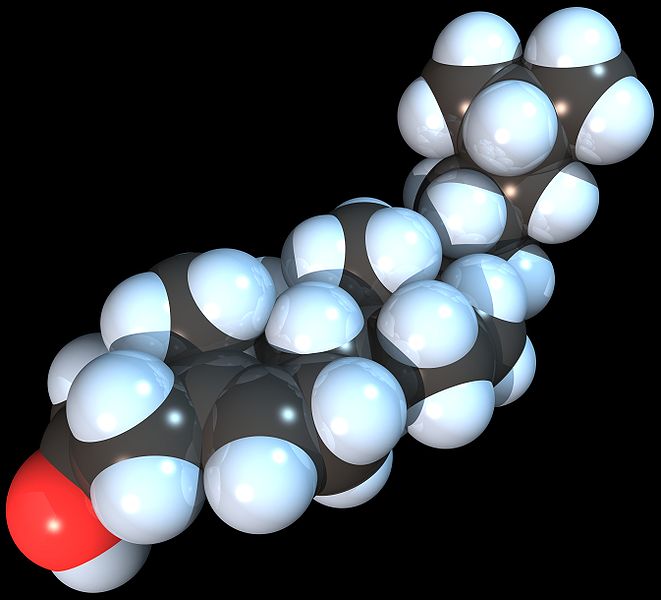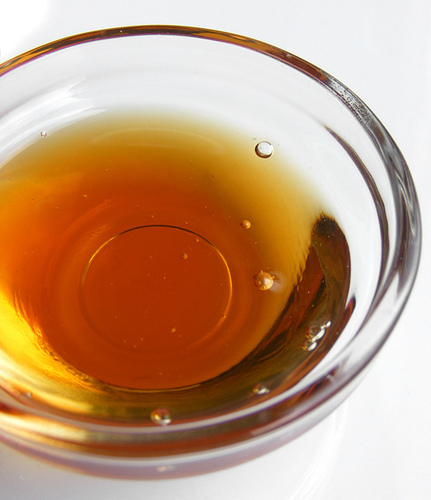
by E. Fortie
Having high cholesterol is something no one wants to hear from their doctor, yet it is becoming more commonplace every day. Having high levels of LDL, the “bad” type of cholesterol, can block arteries and increase risk for heart disease and stroke. There are many variables that put an individual at a higher risk for having excessive levels of cholesterol in their blood stream. Understanding what cholesterol is and how to control it through diet can help people live longer and healthier lives.
What is Cholesterol?

Cholesterol is a fatty substance found in the blood that can stick to the walls of the blood vessels. There are two distinct types of cholesterol, low-density lipoprotein, or LDL, and high-density lipoprotein, or HDL.
LDL is the bad brother of HDL. When high amounts of LDL are found in the bloodstream it can cause blockages in the arteries and puts people at greater risk for heart attack. HDL is the good brother. High HDL levels in the bloodstream will actually reduce the risk of heart disease because its job is to keep the LDL under control. It removes the fatty LDL and keeps the blood vessels healthy thus preventing atherosclerosis.
Both LDL and HDL are found in animal based foods. Fruits and vegetables do not contain either type of cholesterol. Because of this, a diet high in saturated fats is one of the main risk factors for high cholesterol. Other risk factors for high HDL cholesterol levels are diabetes, obesity, sedentary lifestyle, and family history.
A simple blood test can determine cholesterol levels. Combined, normal HDL and LDL levels in the blood should not be more than 200 milligrams. Anything over 240 milligrams is considered high cholesterol. Ideally LDL alone should be less than 130 and HDL alone should be over 40. Dividing the LDL count by the HDL count will provide the ratio. For men, the ratio should be below 4 and women below 3.5. Studies have shown that bringing the ratio below 2.8 can actually reverse heart disease.
Controlling Cholesterol Levels Through Diet
It is possible to control the levels of HDL and LDL in the bloodstream naturally through diet and lifestyle changes. Exercise regularly, eat less fatty and processed foods and more fruits, vegetables and whole grains, stop smoking and try to limit alcohol consumption to a single drink per day, preferably red wine.
People with high cholesterol should avoid foods high in saturated and trans fats. Red meat, egg yolks and fats that remain solid at room temperature such as butter and coconut oil are all high in unhealthy fats. Instead opt for food options low in cholesterol such as low fat dairy products, fruits, vegetables, whole grains, legumes, and egg whites.
The Mediterranean Diet
The Mediterranean diet is one of the healthiest ways to eat. The diet is designed to increase metabolism, reduce hunger and cravings while helping people to lose weight and reduce risk of disease and illness.
The Mediterranean diet can be outlined by food groups and how often to consume certain foods.
You should use the following as a guideline for daily, weekly and monthly consumption of food.
Daily consumption:

– At least six glasses of water
– Fresh fruit and vegetables with every meal: Oranges and berries should be eaten frequently because they contain helpful antioxidants. Fruit can be eaten as a dessert.
– Whole grains, bread, pasta and potatoes
– Nuts and legumes: Nuts provide protein and monounsaturated fats, but should be eaten in moderation because they are high in calories. Legumes such as beans are high in protein and fiber and should be a diet staple.
– Olive oil should be the main source of fat. It can be used in cooking or as a salad dressing.
– Cheese and yogurt.
Weekly consumption:
– Fish provide necessary omega-3 fats and should be consumed two or three times per week.
– Poultry
– Eggs
Monthly consumption:
Red meat should be limited and only eaten once or twice a month.
Instead focus on white meats such as fish and poultry and other protein sources such as nuts and beans.
Sample Menu
There are many healthy foods that can be consumed while eating a Mediterranean style diet. Meals should be small and healthy snacks should be incorporated throughout the day to prevent hunger and binging on unhealthy foods. A sample day would look like:
Breakfast: Yogurt with fruit and granola
Lunch: Turkey sandwich on whole grain bread, apple, tortilla chips and salsa
Snack: Hummus and pita wedges
Dinner: Whole grain pasta with meatballs and tomato sauce, salad with olive oil and lemon, glass of red wine
Snack: Fresh berries with whipped topping or honey.
Diet is an important factor to consider when trying to reduce your LDL cholesterol. Eating foods low in saturated fats is an important aspect to consider if you want to reduce your LDL numbers. The Mediterranean diet is low in saturated fats (low red meat) and rich in cholesterol lowering foods like olive oil and foods rich in soluble fiber (i.e. beans or other legumes). These foods are rich of unsaturated fats and play an important role in reducing LDL and boosting HDL.
(This is a guest post by E. Fortie. He is a weight loss coach and author. He writes for the Mediterranean diet meal plans blog. If you want him to share his discoveries on how diet may lower bad cholesterol levels and lose weight, you can follow him on Twitter.)





I love Mediterranean food and enjoy eating a lot of the foods that you mentioned (except the nuts). My cholesterol is in a normal range.
Excellent information on controlling cholesterol and explanation of the HDL , LDL terms in simple to understand words.